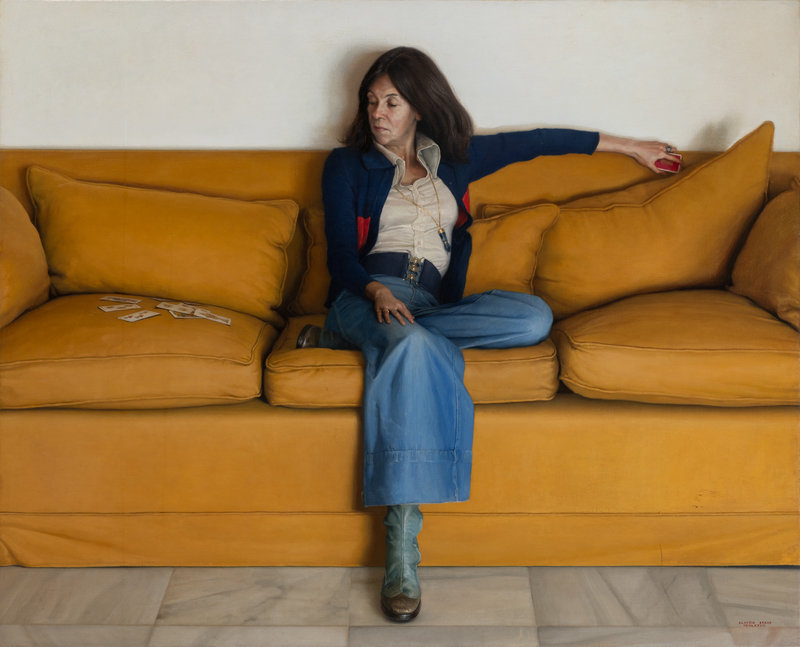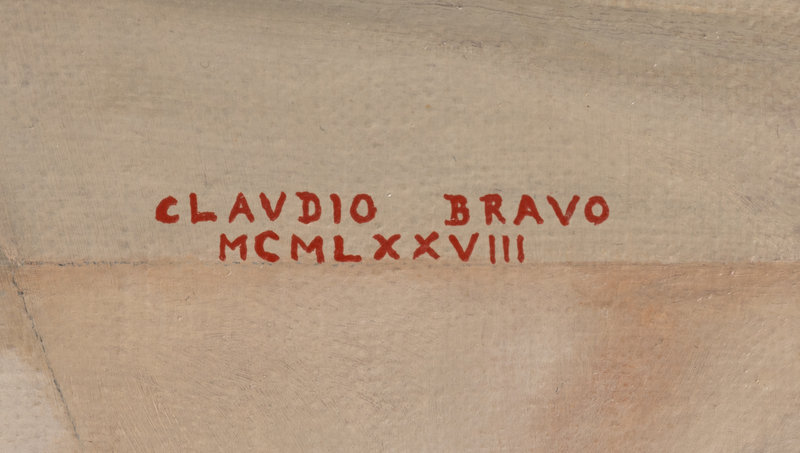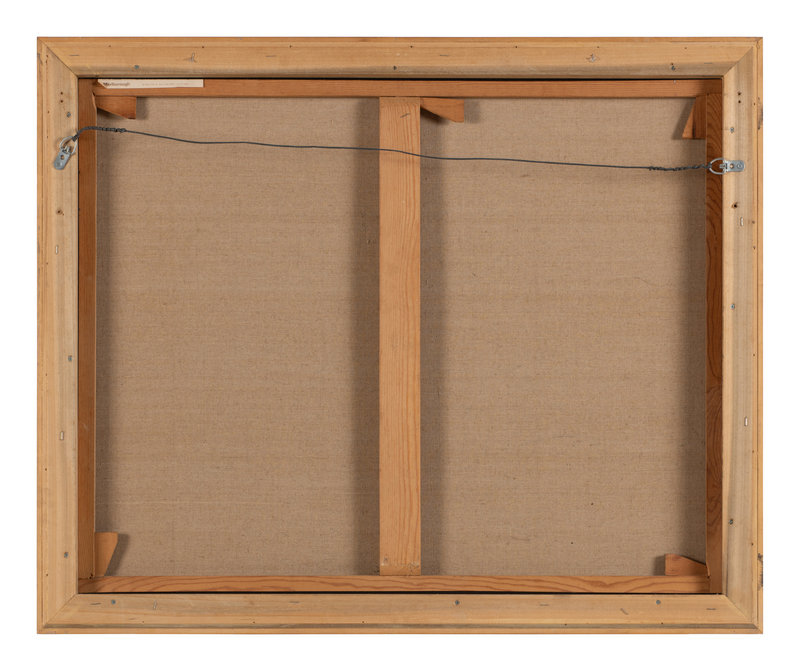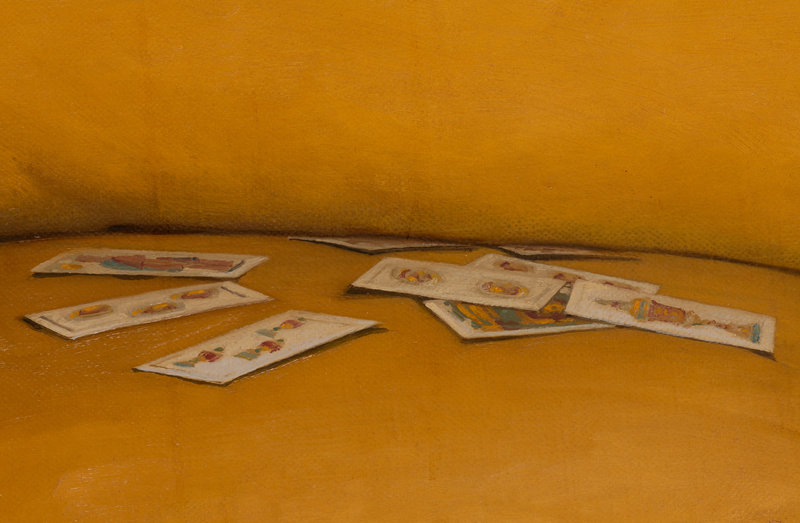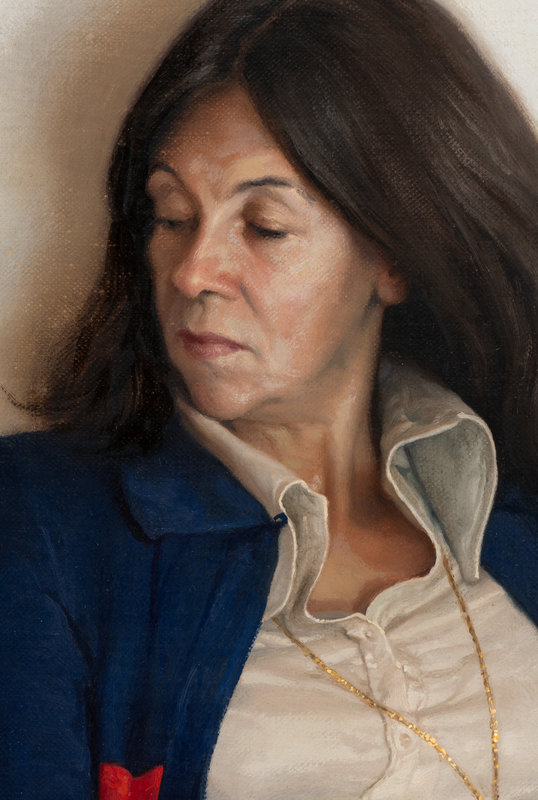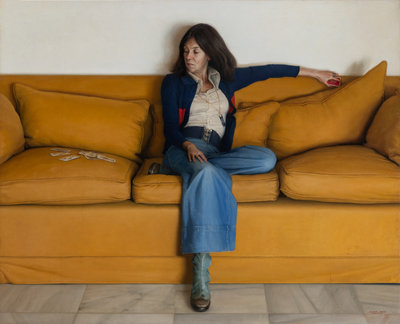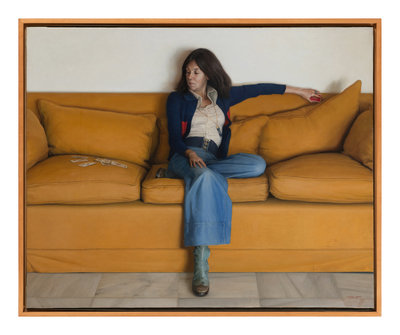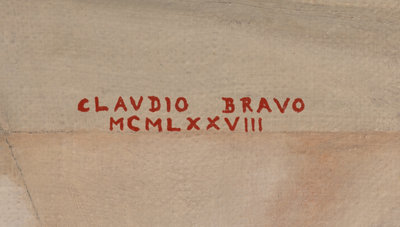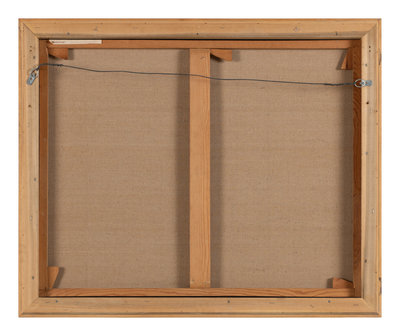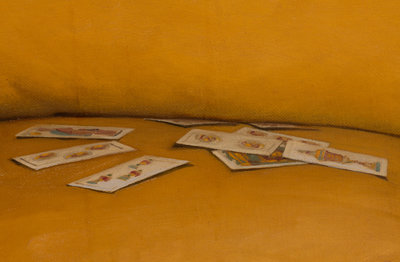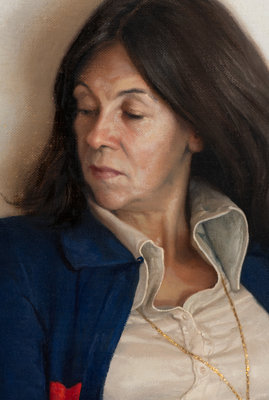Lot 28
Provenance:
The Artist
Marlborough Gallery, New York
Acquired from the above by the present owners, 1989
Lot note:
Virtuoso artist Claudio Bravo was influenced by the art of the Renaissance in its emphasis on portraiture that reflected both the social position and the temperament of the sitter, as well as Baroque light and the dream-like pastiches of the Surrealist movement, to hone a style both particularly searing and particularly his own. Born in Valparaíso, Chile, Bravo left his family ranch to study at the Colegio San Ignacio in Santiago, where he would gift portraits to his teachers to raise his grades. The school administration took notice, and far from punishing this cheeky behavior, in reflection of his talent, they instead paid for him to study art professionally from ages 11 to 20, the only formal training he would ever receive. His hyper-realist style developed, as Chile remained relatively untouched by the throes of Modernism that were concurrently spreading throughout Latin America.
Bravo had his first solo show at the age of 17 – in which everything sold -- and would go on to produce over 500 works throughout his six-decade career. A young Bravo dabbled in poetry, professional dancing, and acting, before deciding to dedicate himself to his art full time and beginning to produce the commissioned portraits that would help make his name. Bravo saved his earnings from these commissions and bought a ticket to sail to Paris, but the journey was fraught with storms and Bravo was forced to disembark in Barcelona, eventually making his way to Madrid, where he stayed. It was in Madrid that Bravo was able to establish himself as a society portraitist. He was in awe of designer Cristóbal Balenciaga, whose works he believed to have a Renaissance quality. He would even force the women of nobility he painted to purchase a Balenciaga piece before he agreed to paint them. The leader of the Philippines, Ferdinand Marcos, extended the invitation to paint him and his wife in 1968, and the six-month trip allowed for a transformation in Bravo’s work as he found the quality of light to be far more intense there than even his native Chile. Indeed, Bravo’s mastery of light and unerring eye for detail throughout his oeuvre has drawn comparisons to the works of classical masters, including Caravaggio, the father of chiaroscuro himself.
By the time he returned to Madrid, Bravo’s reputation had gained international renown, with his first exhibition in New York at the Staempfli Gallery in 1970. Seeking solitude away from his busy social life in Madrid, Bravo moved to Tangier, Morocco in 1972. The bold colors, geometric patterns, and deep history of the African town, so unfamiliar to him, was an inspiration and he painted just about anyone who would sit still for him – mostly workers on his house and their friends. Islamic women would not pose for him, however, prompting him to buy apartments in Madrid and New York to keep his options expansive.
It is during these years rotating through Tangier that Bravo painted the present work, La Colombiana, 1978, a close-cropped scene of a Colombian woman, one leg folded casually underneath her as she sinks into a yellow couch. Despite the ethnic origin of the woman defined by the work’s title, it is Morocco’s almost theatrical influence that can be seen in the richly hued yellow couch and crisp blues of her denim. With a collection of cards scattered next to her, and then clutched more loosely in her hand, she seems relaxed yet distant in thought. Bravo’s signature perspectival focus brings the gaze directly onto the plane, forcing the viewer to examine the subject without distraction and engage with her emotional state.
The Marlborough Gallery hosted its first exhibition of Bravo’s works in 1981, the first of dozens in the next twenty years. Collected internationally by renowned institutions, Bravo was arguably the most prestigious Chilean painter of his time, until his sudden death at his home in Taroudant, Morrocco in 2011. His legacy of especially introspective portraits in lush surroundings, deployed with a fascinating hyper-realistic style, emphasize that of a true Renaissance man.
